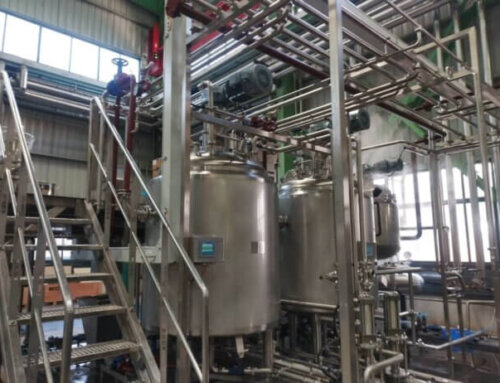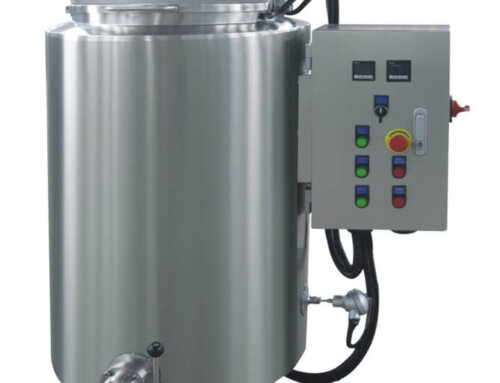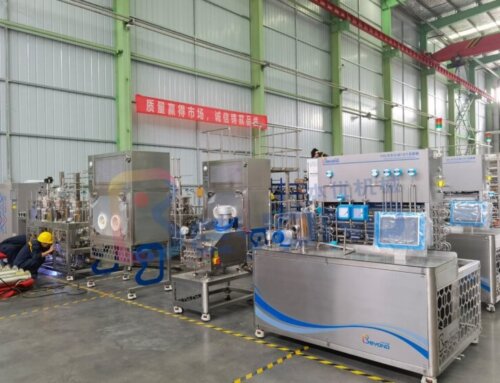Most fruit juice beverages, milk, plant protein beverages, edible oil and drinking water are packaged in plastic containers. As humans have higher requirements for environmental protection, the materials of plastic packaging containers are paying more and more attention to recyclability and health. Today we focus on the characteristics of these different plastic packaging containers. There will be a triangular recycling mark on the bottom of the plastic packaging container.
There will be a triangular recycling symbol from 1 to 7 on the bottom of the plastic packaging container, each number represents a different material. Therefore, the different numbers in the recycling mark indicate what kind of resin the product is made of. If the product is made of several different materials, then what is marked is the main and basic materials of the product. This set of signs originated from the United States, and is now accepted and quoted by many countries including China.
PET container: The full name is polyethylene terephthalate. Mineral water bottles, edible oil bottles and carbonated beverage bottles are made of this material. Some tea drinks and beer also use the PET bottle as the package. This material is heat-resistant up to 70°C. It is only suitable for normal temperatures or frozen drinks. It is easy to deform when it is filled with high-temperature liquid or heated, and substances harmful to the human body may be dissolved. In addition, scientists have discovered that after 10 months of using this plastic product, it may release carcinogens that are toxic to the human body. PET bottles are usually blown with two steps, the resin is first injected into a preform through an injection molding machine, and then the bottle preform is blown into a bottle through the blow molding machine. PET bottles are No. 1 plastic products.

HDPE container: The full name is high-density polyethylene bottle. Plastic containers are mainly for filling medicine, edible oil, milk products, cleaning and bath products, it can withstand a high temperature of 110 ℃, indicating that the plastic container for food can be used for filling food. The molding process of HDPE plastic bottles mainly includes blow molding and injection blow molding. The extrusion blow molding equipment and process are relatively simple. The HDPE bottle neck and its screw thread made by the above process have high dimensional accuracy, stable shape of the bottle body, and more precise coordination between the bottle cap and the bottle neck, which is beneficial to the improvement of the sealing performance of the HDPE bottle. Therefore, medicinal plastic bottles produced by injection blow molding are generally welcomed by the pharmaceutical industry. HDPE bottles are No. 2 plastic products.

PVC container: The full name is polyvinyl chloride, and the raw material of PVC plastic is in the state of a yellowish semi-permeable membrane with luster. Due to the poor stability of PVC plastic bottles to light and heat, PVC bottles cannot be heated at high temperature or exposed to outdoor exposure to ensure the quality of the packaged items and the safety of the human body. PVC bottles are suitable for packaging other products except food packaging. In addition, PVC can also be produced into pipelines, bottle labels, packaging films, etc. If PET bottles and PVC bottles are mixed together, all of them are transparent bottles. PET bottle molding is carried out in two steps, that is, injection molding followed by blow molding. Therefore, there is an injection port at the center of the bottom of each PET bottle. Just take a look at it. PVC is blow-molded and does not need to be injected, so there is no injection port. So a bottle with a filling port is PET, but not PVC. PVC bottles are No. 3 plastic products.

LDPE container: The full name is Low-density polyethylene bottles. Our commonly used water bottles are generally made of LDPE materials, also with plastic wrap and plastic films. The heat resistance is not strong. Generally, PE bottles will melt when the temperature exceeds 110°C, leaving some plastic preparations that cannot be decomposed by the human body. The LDPE bottle can fill similar material like HDPE bottles. It is No. 4 plastic products.

PP container: The full name is Polypropylene. This type bottle can resistant to high temperature of 167℃, and poor transparency, so it is suitable for hot filling fruit juice, tea drinks, This is the only plastic box that can be placed in a microwave oven and can be reused after careful cleaning. It is important to note that some microwave lunch boxes are made of No. 05 PP, but the lid is made of No. 06 PS (polystyrene). PS has good transparency but is not resistant to high temperatures, so the lid cannot be the same as the box to put it in the microwave. To be safe, remove the lid of the container before putting it in the microwave.

PS container: The full name is Polystyrene. This is the material used to make bowls of instant noodle boxes and foaming fast-food boxes. It is heat-resistant and cold-resistant, and can withstand a high temperature of 95°C, so it cannot be placed in a microwave oven to avoid the release of chemicals due to excessive temperature.

PC container: The full name is Polycarbonate. PC is a material that is used for the manufacture of baby bottles, space cups, 5 gallon water buckets, etc. It is controversial due to its content of BPA. Experts pointed out that in theory, as long as 100% of the bisphenol A is converted into a plastic structure in the process of making PC, it means that the product is completely free of bisphenol A, let alone released. However, if a small amount of bisphenol A is not converted into the plastic structure of PC, it may be released into food or beverages. Therefore, pay special attention when using this plastic container.





